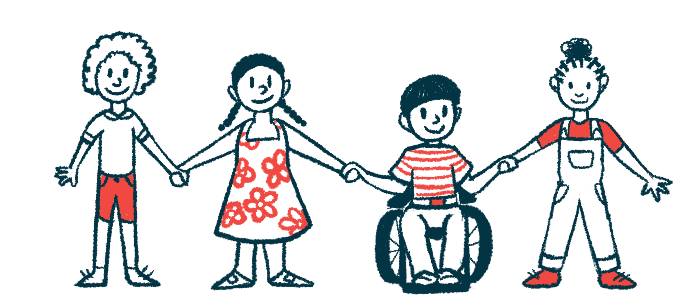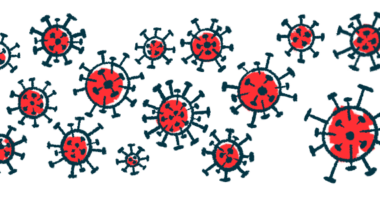Worse Health-related Quality of Life Found for SMA Children in Study
Clinical, demographic factors but not SMA type have effect on scores

Children with spinal muscular atrophy (SMA) type 2 and 3 have lower health-related quality of life (HRQoL) compared with healthy youngsters, but scores are similar for both patient groups, a new study reported.
While disease type was not found to impact HrQoL, some health-related quality of life measures in children with SMA were affected by key clinical and demographic factors — specifically the co-occurrence of other diseases and parents’ education level.
“The quality of life in children with SMA was lower than the healthy control group in all subscales, and physical well-being and psychosocial aspects are the main domains of life impaired by SMA disease,” the researchers wrote.
“However, no significant difference between the quality of life in children with SMA type (2) and type (3) was observed,” they added.
The study, “The quality of life in children with spinal muscular atrophy: a case–control study,” was published in BMC Pediatrics.
Conflicting data to date
SMA is a neurodegenerative disorder characterized by a gradual loss of motor neurons, the nerve cells that control voluntary movement. This leads to increasing muscle weakness and a progressive impairment of muscle control, among other symptoms.
The disease is divided into five main types, based on the age of symptom onset and degree of motor impairment.
In type 2 SMA, symptoms usually start between 6 and 18 months of age. Most patients will be able to sit up independently, but not to stand or walk unaided. In SMA type 3, meanwhile, symptom onset is generally later, with the first signs appearing between 18 months of age and the end of adolescence. Child with this type are able to stand and walk as toddlers, but some may lose that ability as the disease progresses.
HRQoL tools assess the day-to-day quality of life of a patient as it relates to the person’s health. These measures are important for understanding the clinical and personal impacts of a disease, and also to help doctors and caregivers choose disease management options best tailored to each patient.
Although several studies have assessed HRQoL in people with SMA, the use of different tools and methods has yielded conflicting results. Also, many of these studies do not separate findings by demographic data or SMA type, according to researchers.
Thus, a team from Iran set out to assess health-related quality of life in children with SMA types 2 and 3.
The researchers aimed to determine if HRQoL differed between patients and healthy children, and between those with different disease subtypes. They also wanted to find out whether any clinical and demographic factors significantly impact health-related quality of life in SMA patients.
HRQoL was assessed using the KIDSCREEN-27 questionnaire for children and their caregivers, which has a validated Persian version. This tool is divided into five categories: physical well-being, psychological well-being, parent relationship, social support and peers, and social environment.
The study assessed 66 children with SMA. This comprised 34 type 2 patients with a mean age of 11.3 years, and 32 type 3 children with a mean age of 15.5 years. The control group included 264 healthy children who were matched to those with SMA by age, sex, socioeconomic status, and the school they attended.
Results indicated that HRQoL was significantly higher across all five categories in healthy children than in those with SMA. This difference was equally evident in both children’s and parents’ questionnaires. Of the five categories, physical and psychological well-being had the biggest mean difference between the groups.
No patients had SMA treatment, researchers noted
When comparing children with type 2 and type 3 SMA, however, no significant differences were detected in any of the categories – a finding similar in questionnaire results from both children and parents.
In contrast, several HRQoL categories in SMA patients varied according to demographic and clinical factors. For example, having a mother or a father with 12 or fewer years of education was associated with significantly lower scores on psychological well-being and parent relationship categories than children whose parents had more years of education.
The mother’s education level also was associated with children’s physical well-being, whereas the father’s education level was linked to social support and peers and social environment.
Other associations included a better parent relationship in children with one or no siblings, higher psychological well-being in children with access to medical facilities, and better physical well-being and parent relationship in patients who didn’t require a wheelchair.
A history of mood disorders, and the presence of gastrointestinal or respiratory disease also were factors that affected at least one category of HRQoL.
Girls had a better score in social environment than boys, but the researchers noted it “may be due to different interests and styles of life in different genders in this age group in Iranian children.”
In conclusion, all measured categories of quality of life were higher in healthy children than in those with SMA, but no differences were found when comparing SMA type 2 with type 3.
Researchers also noted that none of the children had undergone any of the new therapies developed in the last decade to modify the disease.
“At the time of doing this study, none of the patients had access to advanced [SMA] treatments,” the researchers wrote, noting that HRQoL measures will likely be affected with access to SMA therapies.
“A new study to evaluate and compare the issue of QoL after access to treatment in these patients is recommended,” they concluded.









